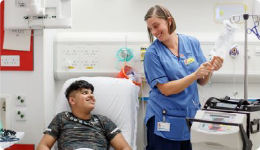MRI is a way of examining the organs and tissues in the body without the use of X-rays and has no known harmful effects.
The MRI scanner uses a strong magnetic field, radio waves and an advanced computer to provide very clear and detailed images of any area of the body, and is particularly useful when examining soft tissue areas in the body such as the brain or spinal cord.
MRI is a valuable tool for the diagnosis of a wide range of conditions and allows us to see some body structures that may not be visible with other diagnostic imaging methods.
MRI scans are often used to examine joints, particularly for the common sports injuries affecting the knee. Scans can identify tendons, ligaments, muscle, cartilage and bone marrow and can help your doctor decide whether an injury needs surgery.
Because it is has a very strong magnet we do a checklist before you go in to make sure you don’t have anything magnetic on you or inside you.











